the route
Travel is a large part of my life; it is immensely rewarding, each experience in a foreign place adding—sometimes subtly, sometimes profoundly—to my understanding of people, cultures, and the places they build and inhabit, how they've built them, how they've preserved them, added to them, and sometimes destroyed them. Additionally, there is the simple enjoyment of natural beauty throughout a myriad of scapes, both land- and under-sea-. These experiences were first felt during travel as a child with my parents. I have carried on from there, taking myself through North and South America, Europe, Africa, Asia, and Oceania. There is presently no end to the road in sight.
United States of America ▪ Jamiaca ▪ United Kingdom of Great Britain and Northern Ireland ▪ Italy ▪ France ▪ Spain ▪ Netherlands ▪ Thailand ▪ China (Hong Kong and Macau) ▪ Australia ▪ Chile ▪ Guatemala, Honduras, and Belize ▪ Egypt ▪ Japan ▪ New Zealand ▪ Dominican Republic ▪ Mexico ▪ Portugal ▪ Tanzania ▪ South Africa ▪ Lesotho ▪ Colombia ▪ Panama ▪ Qatar ▪ United Arab Emirates ▪ Mauritius ▪ Poland ▪ UNESCO
United States of America
1976, 1981, 1986, 1988, 1989, 1990, 1991, 1992, 1994, 1995, 1998, 2002, 2004, 2015, 2016, 2017, 2018, 2023, 2024, 2025
As it is for many Canadians, most of my foreign forays have been into the United States. However, I only consider my first "real" trip there to be the one I made without my parents (the fact it was with teachers as chaperones being completely incidental, of course). It was then I first really started documenting renowned and interesting buildings I encountered in New York, Chicago, Miami, Cleveland, New Orleans, Los Angeles, and other cities. There're now simply too many buildings to list in full. But, among them are works (often multiple) by Ludwig Mies van der Rohe, John Pawson, Walter Gropius, Frank Lloyd Wright, Frank Gehry, HH Richardson, Louis Sullivan, Thomas Beeby, Helmut Jahn, Morris Lapidus, and IM Pei.
I’ve also regarded the differences between American cities and between American metropolises and their Canadian, European, and Asian counterparts, in terms of both character of the urban fabric (managed aesthetic versus haphazard individualism, for instance) and urban planning (rigid grid or organic expansion).
Jamaica
1980, 2017
It was but a brief time in Falmouth; one of the ports of call on a Caribbean cruise to islands generally known for nothing but their beaches. The buildings say this was once a thriving port town: An open square is surrounded by instutional edifices in plastered stone with Georgian trimmings; shops topped by clapbaorded, sash-windowed apartments; and restaurants shaded beneath balconied porticoes. Behind are residential areas, where homes with deep porches and large bay windows still stand. But, the clean lines and fine craftsmanship have been half-buried under layers of patches, wires, and signage. Only the brightly coloured paint saves the town from what would likely otherwise be a dingy feel.
Noteworthy were the lines of the William Knibb Memorial Baptist Church, which, as the structure was put up in the late 1940s, lie somewhere between Art Deco and early Modernism, all executed in the typical local materials of concrete, coral blocks, and corrugated metal.
United Kingdom of Great Britain and Northern Ireland
1982, 1988, 1997, 2004-2005, 2025
Many trips have been made to the UK, as Scotland is where all my extended family resides. Visits in my younger years took in the Scottish countryside and lochs, as well as castles and cathedrals, standing and ruined. Later, I experienced more modern works like John Pawson's London store for Jigsaw (with its silky plaster walls), London City Hall by the Lord Foster of Thames Bank, Herzog and de Meuron's dark Tate Modern, and others. But, also, I revisited older structures, such as Bute House by Robert Adam and William Henry Playfair's terraces around Calton Hill, both in Edinburgh, with a more refined appreciation.
Italy
1997
A semester of architecture school was spent living and studying in Italy, based in Florence and, though the richness of that city is enough to give a lifetime of exploration and learning, travelling extensively throughout the country, taking in Rome, Pisa, Bologne, Pienza, Siena, Pompeii, Tivoli, Venice, Vicenza, Milan, Naples, Verona, and others. It was an immersion into piazzas and palazzos, analyzing the works of Palladio, Michaelangelo, Brunelleschi, and Scarpa, as well as drinking wine with friends in my little apartment with its glimpse of the Duomo through the window.
France
1997, 2025
One month out of the semester in Italy was spent in Nice. While Nice had the beach and the Promenade des Anglais, it had little to offer architecturally. So, from there I travelled to other parts of France, including Avignon, Malcontenta, Saint-Paul-de-Vance, Paris, Versailles, etc., and viewed works by Pei, Rogers, Piano, Le Corbusier, Nouvel, and Garnier, as well as monuments such as Notre Dame de Paris and Palais des Papes.
In Réunion, an overseas department of France, contemporary structures—using simple, contrasting, rectilinear and curvilinear forms clad by, or voids formed within, homomaterial envelopes (such as the Media Library St Paul)—stand adjacent to historical buildings—built in a traditional method from stone, wood, and metal (the Church of the Conversion of Saint Paul (with its oil derrickesque bell tower), for example).
Spain
1997
A side-trip was made from Nice to Barcelona where I walked Las Rambla from the Plaça de Catalunya to the modern pier at Port Vell, taking in Art Nouveau apartment buildings and, just to the east, the medieval and Roman structures still to be found in the Barri Gòtic. Gaudi was omnipresent: I viewed his apartment buildings and Park Güell and toured Palau Güell, and, of course, Sagrada Família, getting a visceral experience of the buildings' textures and morphing spaces.
Netherlands
1997
Part of the route home from Europe went through the Netherlands. There I experienced two contrasting cities: In Amsterdam, it was the canals and distinct Dutch vernacular of narrow, brick buildings with varying styles of ornamental gables, while, in Rotterdam, it was a city rebuilt after near total destruction in war, a collection of cold, quickly built 50s and 60s blocks as well as more recent, more architecturally rich buildings. The urban life was similar, however; the trams and bicycle-friendly planning.
Thailand
1999-2000
My first trip to Asia was to Thailand, a country rich in culture, but, with a limited architectural palette; almost all buildings of note are temples, the design of which has changed little over centuries. Still, that same resistance to fast and drastic change has made those compounds rich, both with layers of building elements and ways in which they are customarily used; certain ceremonies being performed at the threshold of each boundary around the inner sanctum, for instance. Some of the traditional residential buildings were notable, as well. Not for architectural finesse, but, for a distinct regional style deriving from adaptation to the environment.
China (Hong Kong and Macau)
2000, 2001, 2014
Hong Kong has three times been a layover between Toronto and Sydney; one included a side-trip to Macau. Both being former European colonies, there is much Western architecture to be found. However, it, for quite a long time, has incorporated local motifs and design practices (sometimes even from other Asian regions), fitting into the very dense urban fabric. Hong Kong provided the opportunity to view massive housing blocks (such as Chungking Mansions), as well as buildings by IM Pei, the Lord Foster of Thames Bank, Skidmore Owings and Merrill, Dennis Lau, and Kohn Pedersen Fox.
Australia
2000-2001, 2013, 2014
I first journeyed to Australia to settle for a few years and work in architecture there. That plan didn't pan out. But, I did remain for the year I had under my visa and, basing myself in Sydney, NSW, for a few months, and Newman, WA, for the remainder, I travelled through every state and territory. I then returned some 12 years later to see old friends and tread some new territory.
Each marjor city has its own character—though, there are commonalities, as well—and Australia has a plethora of notable buildings, historical and modern: The Victorian "Wild West" structures of Kargoorlie, the Dr Chau Chak Wing building by Frank Gehry, and the Queen Victoria Building by George McRae in Sydney, Melbourne's Federation Square (Lab Studio, Karres en Brands, and Bates Smart), and many more, some monumental and others quietly tucked into leftover corners in the urban fabric.
It was an experience to work briefly assisting with the renovation of a public pool and its associated building in Newman; to design for a desert environment.
Chile
2002-2003
Chile proved to be a land of surprises. While the typical Spanish-colonial architecture was to be found everywhere, what was unexpected was the Beaux-Arts buildings of Santiago's boom in the late 19th century, the hints of Germanic style in Valparaiso houses, and the number of Gustave Eiffel-designed prefabricated structures, including a market, train station, and church. A journey north to the Altcama provided the opportunity to experience a desert city and colonial buildings adapted to that environment.
Guatemala, Honduras, and Belize
2003-2004
A trek through three Central American countries took me through typical Caribbean vernacular—light, wood frame buildings raised off the ground and with plenty of ventilation—in Belize to Spanish colonial remnants in Guatemala and Honduras. The city of Antigua is especially rich in physical history, with the still-standing ruins of buildings destroyed by earthquakes and never restored after the city was abandoned as the colonial capital. Of course, there was also the unique remains of the cities of Tikal and Copan, which provided a fascinating, up-close study of Myan architecture and building techniques.
Egypt
2004-2005
Egypt did not provide anything in the way of outstanding contemporary buildings (alas, I did not go to Alexandria to see the library), but, it was a cornucopia of traditional Islamic architecture and ancient Egyptian monuments. The Islamic City of Cairo is rife with mosques, gates, and madrasas, and the streets are teeming with urban life, full of vendors and the customers they bargain with. Outside Cairo, the ruins are the attraction: The Pyramids are impressive, but lack the finesse of the carved columns, in varying abstractions of reed bundles, arranged across the massive spreads of Karnak and Luxor temples, as well as the bas-reliefs and technicolour painted surfaces in tombs and chambers.
Japan
2006
It is not simple to sum up Japan. My trip there resulted in everything I'd hoped for and more; in terms of architecture, as well as culture, landscape, and interaction. The hyperactivity of the dense urban centres contrast with the serenity of the temples in their forest settings; chrome and neon compared with wood and copper; the cacophony of voices, music, and jangling of the city streets only a few kilometers from a quiet that allows water trickling into a coy pond to be heard from across a gravel yard.
It was an experience beyond compare to see work such as Tadao Ando's Omotesando Hills complex, Toyo Ito's Tod's store, the Kyōto train station by Hiroshi Hara, and Kenzō Tange's Tokyo City Hall, Yoyogi National Gymnasium, and Hiroshima Peace Memorial Museum. All that was balanced with the craftsmanship and honed elementalism of the temples, castles, and their gardens around Tokyo and Kyōto and the unique style and traditions of the buildings on the Yaeyama Islands.
New Zealand
2013-2014
A harried trip around the North Island left little time for the appreciation of architecture. However, Auckland proved itself amenable to contemporary buildings and urban design that doesn't eliminate built heritage. The waterfront has become a kilometres-long area for work, living, leisure, and entertainment by converting and renovating existing warehouses, industrial buildings, and even infrastructure like railroad tracks (reminders of the port's importance to the city's development) and filling in the gaps between with sensitive, modern interventions. Māori art keeps the culture visible while offering a textural contrast with the smooth glass and stone surfaces of the newer buildings.
Surprising was the Tudor theme throughout Rotorua. and the elegant design of the Waitomo Glowworm Caves Visitors Centre, almost a miniature of the Anaheim Regional Transportation Intermodal Center by HOK.
Dominican Republic
2015
I am not a resort kind of guy. Usually, a whole week at the same beach, in the same hotel, would drive me slightly mad. And resorts are almost universally unremarkable, architecturally speaking. So, it was only because a friend won a free stay at Paradisus Palma Real, and asked me to join, that I ended up in the Dominican Republic.
Upon arrival, and after a bit of exploration, I was intrigued to note quirky, but, deliberate design choices, such as the use of open perimeters and thatched roofs, with both natural-formed wood and steel framing, at the airport. At the resort, the natural landscape was used to create visual and experiential compression
Mexico
2017, 2022
Having visited Mexico only during cruises, I’ve seen little beyond the tourist hotspots of Cozumel, Cabo San Lucas, Mazatlán, and Puerto Vallarta. However, that has still also allowed me to note the differences in the building forms and materials used on the hot, humid Caribbean side—wood frames with thin or no walls, suporting highly peaked roofs, all to let the tropical breezes blow through—versus the dry, cooler Pacific side—stucco on thick stone walls, Rococco cathedrals, paved piazas, and narrow streets overhung with red-tiled eaves, the occasional plaster dome and pedestrian bridge overhead, hinting at a dynamic, populated roofscape.
On the rockier shores of Cabo, the contemporary resorts, too, clinging to the hillsides, with cascading terraces between them, are made with massed walls to absorb heat in the day and radiate it back during the colder nights.
Portugal
2018-19
Having selected Portugal for a last minute trip to celebrate New Year’s based on economy and weather, I had few expectations for architecture. I was thus greatly and pleasantly surprised by what the country offered by way of built form. With a wide view, the texture and colours or Lisbon’s urban fabric are a visual delight under the reflected light off the Rio Tejo, which carries down to more intimate scales through the polychromatic and multi-patterned signature ceramic tiles coating homes and other buildings. Out to Lisbon’s environs, towns like Sintra weave into the landscape, watched over by Moorish fortresses and 19th century fairy tale castles. I saw few buildings by the great international names in architecture, but the works by local architects, such as the Mateus brothers and Manuel Salgado, were admirable.
Tanzania
2022
Tanzania’s architectural possession is mostly what one would expect in a developing country: haphazard and brutally economical. A handful of towers stand in Dar es Salaam, some of which take dynamic forms, but, these are mostly lost behind meaningless, two-dimensional patterns of mullions and panels on the facades.
Stone Town, in the Zanzibar archipelago, is the richest of the nation’s urban fabrics. Though built predominantly during what was the Renaissance in Europe, the town is Medieval in layout and walking its bending streets is akin to hiking at the bottom of a gulley worn into rock. Yemeni colonial influences can be seen everywhere, from the carved and studded doors to the mashrabiya hanging overhead. Similarly, German and British colonial implants are sprinkled throughout, as in Dar es Salaam; mainly administrative buildings and churches. These structures are built from blocks of coral, which is what the Zanzibari islands are actually made of.
South Africa
2022-2023
This was another country I headed to without much knowledge about its architectural richness and found myself pleased by the amount of fresh, daring design on display; the kind of thing one sees more rarely in Canada. Certainly, parts of South Africa showed a degree of modern urban decay I’d not personally witnessed before—it was particularly evident in Johannesburg, perhaps exemplified by its Ponte City apartments, a once cutting-edge residential complex now with a literal garbage dump in its core. However, other areas comprised vibrant reuses of heritage structures and bold forms and materials in contemporary buildings, like in the Victoria and Albert Waterfront area of Cape Town and the Apartheid Museum in Johannesburg. Durban, too, showed its two sides in its gritty core and wall of gleaming hotels and wide promenade along the eastern beaches.
In between were wrought iron gingerbread-trimmed and verandahed Victorian pub-hotels reminiscent of those in Australia, the candy-coloured workers’ houses of Bo-Kaap, and mid-century modern gems just randomly located in suburbs, all making for a rich built fabric.
Lesotho
2023
Lesotho was a (long) day trip from Durban, South Africa; up through the UNESCO World Heritage Maloti-Drakensberg Park and the Sani Pass. Being on the other side of the country from the capital, Maseru, the landscape is almost as bereft of buildings as it is of trees; wide, hilly grasslands extend to the horizons on all sides. Aside from a pub remarkable for nothing, save for it being the highest in Africa, the only built forms around are traditional houses made of circular field stone walls and thatched, conical roofs. At the centre of the brushed grout floor within each home is a slightly sunken fire pit, used for cooking and heating, directly below an opening at the peak of the roof. Benches and beds line the curved, unfinished walls.
Colombia
2024
For me, Cartagena was a port of call on a cruise. I noted its modern form is mostly gleaming white concrete and glass hotel and condominium towers along the Caribbean Sea coast. However, its old town, laid out on a wonky grid, is dense with a polychrome fiesta of Spanish colonial homes, colonnaded civic buildings, and stately, domed cathedrals under the South American sun. There’re also a plethora of covered balconies overhead, many with intricate wrought-iron railings and posts, as well as a semi-hidden world of courtyards, cooled by shade and water features, that, altogether, remind of New Orleans’ French Quarter. Closer to the water, there are thick-walled storehouses with wood-barred windows, below defensive fortifications that cut the city from the sea.
Still, unlike, say, Venice’s historic city centre, Cartagena’s old town is packed with local and domestic life along the streets and in the public parks, plazas, and treed squares.
Panama
2024
A partial transit of the Panama Canal and an overland trip took me from the Atlantic to the Pacific and back again in one day, giving me a brief, but, varied look at the country. Evident are three periods of quick growth: the 17th and 18th centuries—the Spanish colonial period, remembered in its forts and Rococo cathedrals—the late 19th and early 20th centuries—embodied in the canals and the associated Italianate administrative buildings built by the Americans—and the 21st century—represented by the spindly, white skyscrapers along the shoreline in Panama City, designed by Panamanian and international architects.
Qatar
2024
Text…
United Arab Emirates
2024
Text…
Mauritius
2025
Text…
Poland
2025
Text…
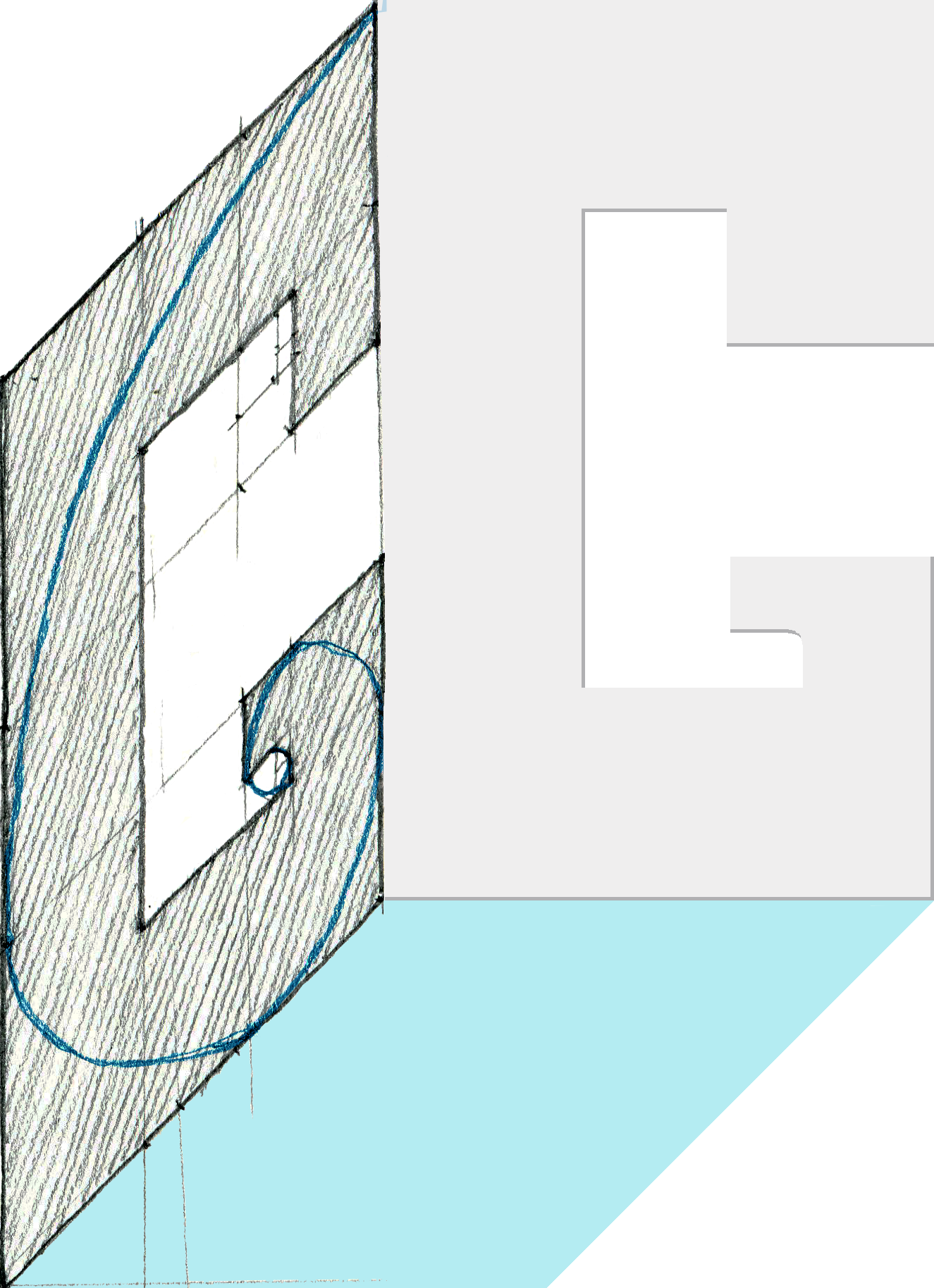
![United States Custom House (Cass Gilbert) and 2 Broadway (Emery Roth) [image: Gavin Guthrie]](https://images.squarespace-cdn.com/content/v1/55a9c36fe4b03f43f2a11902/1448037869684-0FI1BTDU8O6APSJOEYZX/img141.jpg)
![John J Glessner house (HH Richardson) [image: Gavin Guthrie]](https://images.squarespace-cdn.com/content/v1/55a9c36fe4b03f43f2a11902/1721276746816-GY0XTB9AC77KKVNU9D7U/IL-01-031-0044_003.jpg)
![Raquet and Tennis Club (McKim Mead & White) and Seagram Building (Ludwig Mies van der Rohe and Philip Johnson) [image: Gavin Guthrie]](https://images.squarespace-cdn.com/content/v1/55a9c36fe4b03f43f2a11902/1721337541506-VJRAM4Z4MEYXI9FIX29E/img184.jpg)
![sketches of Rockefeller Center (Raymond Hood) [image: Gavin Guthrie]](https://images.squarespace-cdn.com/content/v1/55a9c36fe4b03f43f2a11902/1442978943169-U91JYVG3Y6BVRN4KH14W/img136.jpg)
![Paramount Plaza (Emery Roth & Sons), One Worldwide Plaza (SOM), and 1585 Broadway Avenue (Emery Roth & Sons and Gwathmey Siegel & Associates Architects) [image: Gavin Guthrie]](https://images.squarespace-cdn.com/content/v1/55a9c36fe4b03f43f2a11902/1565367709819-GKPXVO1GPUPW8QMTBWPZ/img155.jpg)
![Royal Palm South Beach Hotel (Arquitectonica) [image: Gavin Guthrie]](https://images.squarespace-cdn.com/content/v1/55a9c36fe4b03f43f2a11902/1442852496294-T1ZJSW8Q2L28GX86GQPP/img091.jpg)
![sketches of O'Hare International Airport (Helmut Jahn) [image: Gavin Guthrie]](https://images.squarespace-cdn.com/content/v1/55a9c36fe4b03f43f2a11902/1442979111172-WIIO41FVF0ZHJYGNIUUU/img138.jpg)
![Rock and Roll Hall of Fame (Pei Cobb Freed & Partners) [image: Gavin Guthrie]](https://images.squarespace-cdn.com/content/v1/55a9c36fe4b03f43f2a11902/1448053304714-ZOLY3KFNGNSW1IWD70BO/img147.jpg)
![sketches of Four Seasons hotel (WATG and Wimberly Interiors), New York New York hotel and casino (Neal Gaskin and Ilia Bezansky), Veer Towers (Helmut Jahn), and Venetian hotel and casino (Sheldon Adelson) [image: Gavin Guthrie]](https://images.squarespace-cdn.com/content/v1/55a9c36fe4b03f43f2a11902/1721275839491-L73D6OSCDAXBDDRHA3XB/US1.jpg)
![sketches of Queen Mary hotel (George Mcleod Paterson) and Anaheim Regional Transportation Intermodal Center (HOK) [image: Gavin Guthrie]](https://images.squarespace-cdn.com/content/v1/55a9c36fe4b03f43f2a11902/1721276230430-60OE1BA4YYRGN8UWM4O5/US2.jpg)
![Queen Mary hotel (George Mcleod Paterson) [image: Gavin Guthrie]](https://images.squarespace-cdn.com/content/v1/55a9c36fe4b03f43f2a11902/1721276188846-0FOWXAORRGKGB2EVUAU3/Photo+2015-04-16%2C+6+43+43+PM.jpg)
![sketches of Union Station (John and Donald Parkinson) [image: Gavin Guthrie]](https://images.squarespace-cdn.com/content/v1/55a9c36fe4b03f43f2a11902/1721335651023-AQFC7IMOEHUO6XHVFG14/US3.jpg)
![sketches of Hollyhock House (Frank Lloyd Wright) [image: Gavin Guthrie]](https://images.squarespace-cdn.com/content/v1/55a9c36fe4b03f43f2a11902/1721336318966-EKK4YL5L10S90K5E8919/US4.jpg)
![Hollyhock House (Frank Lloyd Wright) [image: Gavin Guthrie]](https://images.squarespace-cdn.com/content/v1/55a9c36fe4b03f43f2a11902/1448053940572-SAALYL2T8KO2QD2E7XLV/Photo+2015-04-19%2C+5+32+15+PM.jpg)
![Piazza d'Italia (Charles Moore and Perez Architects) [image: Gavin Guthrie]](https://images.squarespace-cdn.com/content/v1/55a9c36fe4b03f43f2a11902/1565367604924-NXXUC35GOFZTDWXBFB7X/IMG_4512.JPG)
![Canal Street [image: Gavin Guthrie]](https://images.squarespace-cdn.com/content/v1/55a9c36fe4b03f43f2a11902/1565367837770-UG6FIC1GY8XFH6XZJY88/IMG_4525.jpg)
![Fini Supermarket [image: Gavin Guthrie]](https://images.squarespace-cdn.com/content/v1/55a9c36fe4b03f43f2a11902/1666062137648-2FSK3N0XUY85XOGYW1ZB/081.JPG)
![Water Square and Falmouth Courthouse (John Robey) [image: Gavin Guthrie]](https://images.squarespace-cdn.com/content/v1/55a9c36fe4b03f43f2a11902/1666062075417-ECM4OU503UU6XC19VGXK/079+%282%29.JPG)
![41 King Street [image: Gavin Guthrie]](https://images.squarespace-cdn.com/content/v1/55a9c36fe4b03f43f2a11902/1666055125063-RZ74ZOMOHO5NV9W6KYJC/075.JPG)
![24 King Street [image: Gavin Guthrie]](https://images.squarespace-cdn.com/content/v1/55a9c36fe4b03f43f2a11902/1666061974337-8QJEA6ZGXZ3L8T09IBZF/078.JPG)
![Sweetheart Abbey [image: Gavin Guthrie]](https://images.squarespace-cdn.com/content/v1/55a9c36fe4b03f43f2a11902/1442976899096-LRSQT4XKVAA8RMWI6THS/3.jpg)
![Millennium Bridge (Foster + Partners, Sir Anthony Caro, and Arup) and St Paul's Cathedral (Sir Christopher Wren) [image: Gavin Guthrie]](https://images.squarespace-cdn.com/content/v1/55a9c36fe4b03f43f2a11902/1442977981950-Z3NAKO9DUT49SKTTX0NB/img134.jpg)
![sketches of Tate Modern (Herzog & de Meuron) [image: Gavin Guthrie]](https://images.squarespace-cdn.com/content/v1/55a9c36fe4b03f43f2a11902/1441415706007-5Y3ZDP5NL7L66Z67LTS2/img084.jpg)
![The Quadrant (Reginald Blomfield) [image: Gavin Guthrie]](https://images.squarespace-cdn.com/content/v1/55a9c36fe4b03f43f2a11902/1441415703938-WTBJHTI934B4YG754S32/4.jpg)
![sketches of Glasgow Cathedral, Glasgow Museum of Religion (Ian Begg), and Bute Hall (John Oldrid Scott) [image: Gavin Guthrie]](https://images.squarespace-cdn.com/content/v1/55a9c36fe4b03f43f2a11902/1441415706211-1C8YO3893KV05TWDSREZ/img083.jpg)
![sketches of Parliament of Scotland (EMBT Architects) [image: Gavin Guthrie]](https://images.squarespace-cdn.com/content/v1/55a9c36fe4b03f43f2a11902/1441415708429-3V775J0NXIOZHNMCJQXW/img085.jpg)
![Parliament of Scotland (EMBT Architects) [image: Gavin Guthrie]](https://images.squarespace-cdn.com/content/v1/55a9c36fe4b03f43f2a11902/1441415701598-G3KLPC65BNH3RMSAVIA6/1.jpg)
![sketches of Glasgow School of Art (Charles Rennie Mackintosh) [image: Gavin Guthrie]](https://images.squarespace-cdn.com/content/v1/55a9c36fe4b03f43f2a11902/1441415708971-XHJIB8BX5DBCOGGQOYM9/img086.jpg)
![sketches of Pienza piazza [image: Gavin Guthrie]](https://images.squarespace-cdn.com/content/v1/55a9c36fe4b03f43f2a11902/1440630946694-DKEDBFHV15HR442AZ4ZE/img066.jpg)
![Canopo at Hadrian's Villa [image: Gavin Guthrie]](https://images.squarespace-cdn.com/content/v1/55a9c36fe4b03f43f2a11902/1438799349142-H4DJ22D828JLCOCN6RCS/img115.jpg)
![Villa Rotunda (Andrea Palladio) [image: Gavin Guthrie]](https://images.squarespace-cdn.com/content/v1/55a9c36fe4b03f43f2a11902/1438799405962-HOZF82OSRFL2NSRWIFSY/img128.jpg)
![Colosseum [image: Gavin Guthrie]](https://images.squarespace-cdn.com/content/v1/55a9c36fe4b03f43f2a11902/1448040670374-3A5DUV4ZFDR5ZR2YCBRB/img146.jpg)
![Museo Civico di Castelvecchio (Carlo Scarpa) [image: Gavin Guthrie]](https://images.squarespace-cdn.com/content/v1/55a9c36fe4b03f43f2a11902/1438799448894-DQ99OF1ZTJFIFWW1F14B/img130.jpg)
![sketches of Sanctuary of San Biagio (Antonio da Sangallo the Elder) [image: Gavin Guthrie]](https://images.squarespace-cdn.com/content/v1/55a9c36fe4b03f43f2a11902/1440630487066-CBMLPH0YB3PFC27XOGSA/img067.jpg)
![sketches of Cimitero Brion (Carlo Scarpa) [image: Gavin Guthrie]](https://images.squarespace-cdn.com/content/v1/55a9c36fe4b03f43f2a11902/1440630423188-MGQTA3KGGMQ1CEOM0BLZ/img069.jpg)
![Cattedrale di San Marco [image: Gavin Guthrie]](https://images.squarespace-cdn.com/content/v1/55a9c36fe4b03f43f2a11902/1448039490426-1LJUCZXXZPHP1X9FHIUO/img143.jpg)
![Centre Pompidou (Piano & Rogers and Gianfranco Franchini) [image: Gavin Guthrie]](https://images.squarespace-cdn.com/content/v1/55a9c36fe4b03f43f2a11902/1438807110039-QF4PQ6VQOBZFP4CMUJWR/img106.jpg)
![sketches of Centre Pompidou (Piano & Rogers and Gianfranco Franchini) and Palais Garnier (Charles Garnier) [image: Gavin Guthrie]](https://images.squarespace-cdn.com/content/v1/55a9c36fe4b03f43f2a11902/1440640603782-A6IMU4XFJIQZT6DS8FUK/img071.jpg)
![Palace of Versailles [image: Gavin Guthrie]](https://images.squarespace-cdn.com/content/v1/55a9c36fe4b03f43f2a11902/1438807146798-EUAPCSD0P2LP7LL0TA5C/img112.jpg)
![sketches of Palace of Versailles and Notre Dame de Paris [image: Gavin Guthrie]](https://images.squarespace-cdn.com/content/v1/55a9c36fe4b03f43f2a11902/1440640700085-HYN1UCJWHL7A52LFC32U/img072.jpg)
![sketches of Grande Arche (Johann Otto von Spreckelsen) and Villa La Roche (Le Corbusier and Pierre Jeanneret) [image: Gavin Guthrie]](https://images.squarespace-cdn.com/content/v1/55a9c36fe4b03f43f2a11902/1440640769830-HHNK4ELOC2J82UPC5T8S/img073.jpg)
![Villa La Roche (Le Corbusier and Pierre Jeanneret) [image: Gavin Guthrie]](https://images.squarespace-cdn.com/content/v1/55a9c36fe4b03f43f2a11902/1438807300260-RIZE3WPBXIMUB3CQSDZW/img107.jpg)
![Notre Dame de Paris [image: Gavin Guthrie]](https://images.squarespace-cdn.com/content/v1/55a9c36fe4b03f43f2a11902/1440641981432-H8V8QYIOVNBEQI1QH6O7/img104.jpg)
![Pont d'Avignon [image: Gavin Guthrie]](https://images.squarespace-cdn.com/content/v1/55a9c36fe4b03f43f2a11902/1440640824402-VOQTKAPIUAVAJ6T57RL5/img098.jpg)
![Media Library St Paul (Peripheriques Architects) [image: Gavin Guthrie]](https://images.squarespace-cdn.com/content/v1/55a9c36fe4b03f43f2a11902/1737526778284-WGKSSY46JJWPLTMG9ZFE/0879.JPG)
![Church of the Conversion of Saint Paul [image: Gavin Guthrie]](https://images.squarespace-cdn.com/content/v1/55a9c36fe4b03f43f2a11902/1737526798878-HWKMRPP008JGHUX74KGT/0880.JPG)
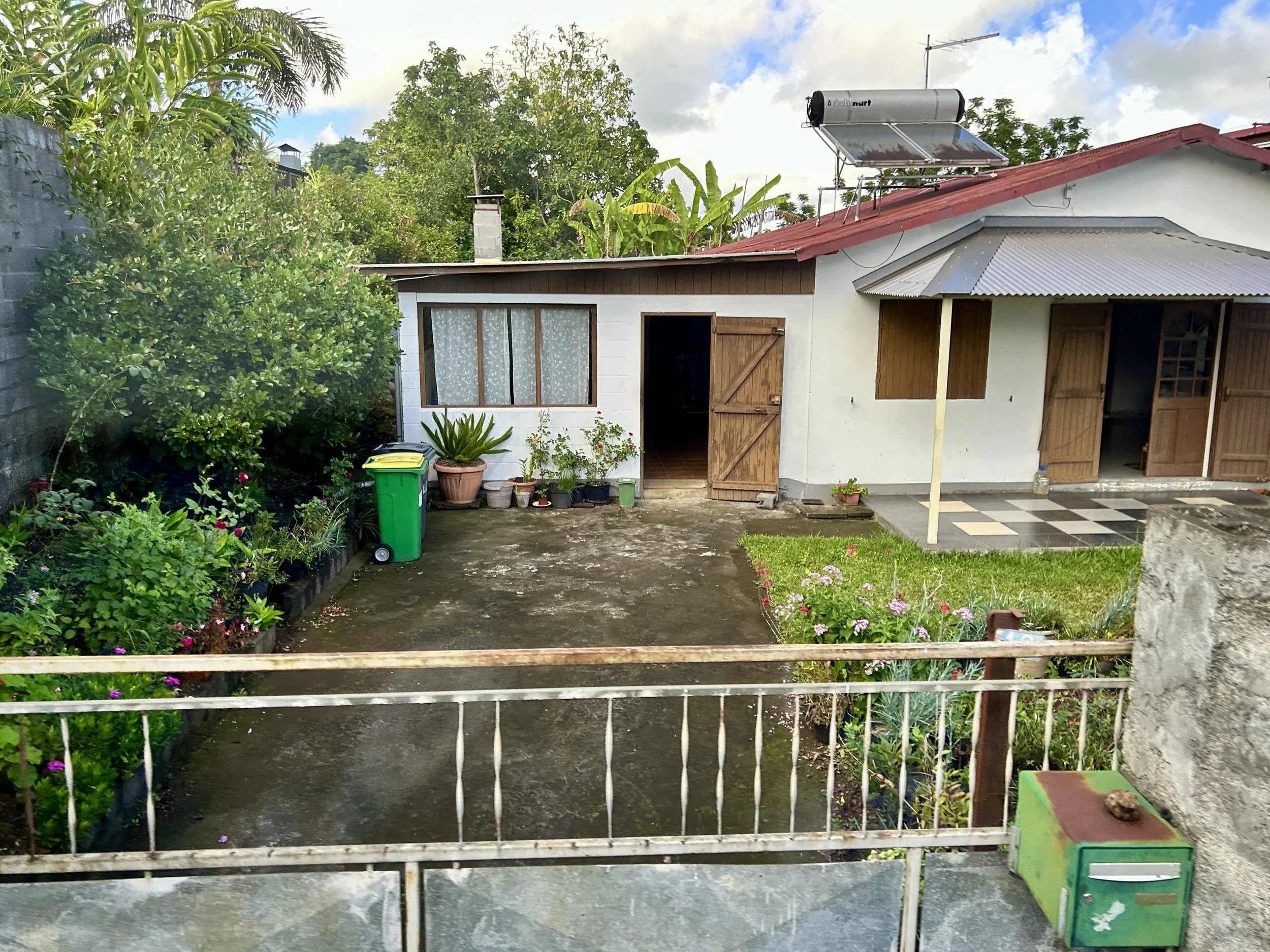

![sketches of Las Rambla [image: Gavin Guthrie]](https://images.squarespace-cdn.com/content/v1/55a9c36fe4b03f43f2a11902/1440690552425-QLY8WREDLQT3CABPK41E/img075.jpg)
![Palau Güell (Antoni Gaudí) [image: Gavin Guthrie]](https://images.squarespace-cdn.com/content/v1/55a9c36fe4b03f43f2a11902/1440690477473-LADAHTEPP5F0R0057Q19/img100.jpg)
![sketches of The Pitchfork (Joan Miró) and Palau Güell (Antoni Gaudí) [image: Gavin Guthrie]](https://images.squarespace-cdn.com/content/v1/55a9c36fe4b03f43f2a11902/1440690501844-ZYPF8IPYJ7XMOT4WP8TW/img074.jpg)
![Palau Güell (Antoni Gaudí) [image: Gavin Guthrie]](https://images.squarespace-cdn.com/content/v1/55a9c36fe4b03f43f2a11902/1442978467951-J3S32RUSEDUQ92FEKS1R/800px-ES-BCN-p-guell-01.jpg)
![sketches of central Amsterdam [image: Gavin Guthrie]](https://images.squarespace-cdn.com/content/v1/55a9c36fe4b03f43f2a11902/1441399317068-BLI0R2JU6NHPTA9KBHRL/img080.jpg)
![Erasmusbrug (UNStudio) [image: Gavin Guthrie]](https://images.squarespace-cdn.com/content/v1/55a9c36fe4b03f43f2a11902/1441399314229-Q785024GYJHWW7EWRSP8/1.jpg)
![Schouwburgplein (West 8) and Pathé Schouwburgplein (Koen van Velzen) [image: Gavin Guthrie]](https://images.squarespace-cdn.com/content/v1/55a9c36fe4b03f43f2a11902/1441399314957-2ED1RWFMYR3FMS2S1JGP/3.jpg)
![sketches of Pathé Schouwburgplein (Koen van Velzen), Schouwburgplein (West 8), and light booms of the Schouwburgplein (Adriaan Geuze and Paul van Beek) [image: Gavin Guthrie]](https://images.squarespace-cdn.com/content/v1/55a9c36fe4b03f43f2a11902/1441399317801-G3OUVYR7GLHF2LQQ5LJQ/img081.jpg)
![Wat Mahathat [image: Gavin Guthrie]](https://images.squarespace-cdn.com/content/v1/55a9c36fe4b03f43f2a11902/1438798876232-MDX19D4QAZ3SEU33MIRK/img006.jpg)
![sketches of Grand Palace and Temple of the Emerald Buddha [image: Gavin Guthrie]](https://images.squarespace-cdn.com/content/v1/55a9c36fe4b03f43f2a11902/1441470332416-L1LY5MTCXS0M58OMDPOG/img091.jpg)
![sketches of Wat Phra Si Sanphet and Wat Phanan Choeng [image: Gavin Guthrie]](https://images.squarespace-cdn.com/content/v1/55a9c36fe4b03f43f2a11902/1441470332331-CVVKRV5SHYE81J11KLOW/img092.jpg)
![Damnoen Saduak District [image: Gavin Guthrie]](https://images.squarespace-cdn.com/content/v1/55a9c36fe4b03f43f2a11902/1441470333731-BF6R9LOALWVFIG2E28U0/img093.jpg)
![Victoria Harbour [image: Gavin Guthrie]](https://images.squarespace-cdn.com/content/v1/55a9c36fe4b03f43f2a11902/1441477460452-KB5HU3TPYU8VN0WOB53Q/img038.jpg)
![typical Hong Kong street [image: Gavin Guthrie]](https://images.squarespace-cdn.com/content/v1/55a9c36fe4b03f43f2a11902/1438882177254-5G5NAWB3UDQYGEOYQ881/img037.jpg)
![sketches of HSBC building (Foster Associates) and Bank of China building (Pei Cobb Freed & Partners) [image: Gavin Guthrie]](https://images.squarespace-cdn.com/content/v1/55a9c36fe4b03f43f2a11902/1441474722332-JJ9RL36G257VFHYSFF57/img095.jpg)
![Company of Jesus Square and the Church of St Paul (Carlo Spinola) [image: Gavin Guthrie]](https://images.squarespace-cdn.com/content/v1/55a9c36fe4b03f43f2a11902/1721076063500-GOL6L8A28ZVIKEUQ3MEH/img087.jpg)
![sketches of Octagonal Pavilion Library (Chan Kun Pui), Church of St Paul (Carlo Spinola), and Museum of Sacred Art and Crypt (Cultural Affairs Bureau of the Macao Special Administrative Region Government ) [image: Gavin Guthrie]](https://images.squarespace-cdn.com/content/v1/55a9c36fe4b03f43f2a11902/1441474930671-NFDM4C4X0YMS4WZ0CR45/img096.jpg)
![Macau [image: Gavin Guthrie]](https://images.squarespace-cdn.com/content/v1/55a9c36fe4b03f43f2a11902/1721076155557-1BSL5XQJVHHUDHYCDANV/img086.jpg)
![Felix (Philippe Starck) [image: Gavin Guthrie]](https://images.squarespace-cdn.com/content/v1/55a9c36fe4b03f43f2a11902/1721075928660-VJ7YX73JZAOIG553W26U/IMG_3680.JPG)
![sketches of Felix (Philippe Starck) [image: Gavin Guthrie]](https://images.squarespace-cdn.com/content/v1/55a9c36fe4b03f43f2a11902/1721075796791-VLKJ55EMEBTVF5MA43NB/HK1.jpg)
![Sydney Harbour Bridge (Thomas S Tait and Dorman Long & Co) and Circular Quay Station (John Bradfield) [image: Gavin Guthrie]](https://images.squarespace-cdn.com/content/v1/55a9c36fe4b03f43f2a11902/1721341099090-M3TD9QMS6KXH4YMO0V9H/img039a.jpg)
![sketches of Cook + Phillip Park Aquatic and Fitness Centre (Studio Nield) and St Mary's Cathedral (William Wardell) [image: Gavin Guthrie]](https://images.squarespace-cdn.com/content/v1/55a9c36fe4b03f43f2a11902/1441486838194-EQFZ6IU08L6THET7826Q/img100.jpg)
![Queen Victoria Building (George McRae) [image: Gavin Guthrie]](https://images.squarespace-cdn.com/content/v1/55a9c36fe4b03f43f2a11902/1441494607496-8T3YH1UXKB5SUB1I461L/0321.JPG)
![Central Park (Ateliers Jean Nouvel) [image: Gavin Guthrie]](https://images.squarespace-cdn.com/content/v1/55a9c36fe4b03f43f2a11902/1441494698990-N1A1IYHATAEQZ1Q1UGGZ/0707.JPG)
![sketches of Australian War Memorial (Emil Sodersten and John Crust), Parliament House (Mitchell/Giurgola Architects), and King George V Recreation Centre (Lippmann Partnership) [image: Gavin Guthrie]](https://images.squarespace-cdn.com/content/v1/55a9c36fe4b03f43f2a11902/1441486850186-PYI1IKZO5INTBSIB7CJ7/img101.jpg)
![sketches of Brisbane City Hall (Hall & Prentice) and Halse Lodge (Hurst & Harris) [image: Gavin Guthrie]](https://images.squarespace-cdn.com/content/v1/55a9c36fe4b03f43f2a11902/1441486841596-YZEZA413NDSOAEFHY1GU/img104.jpg)
![Swan Bell Tower (Hames Sharley) [image: Gavin Guthrie]](https://images.squarespace-cdn.com/content/v1/55a9c36fe4b03f43f2a11902/1438881917937-WO3IXSL4QTB318SOT2TZ/img076.jpg)
![sketches of Broome Courthouse [image: Gavin Guthrie]](https://images.squarespace-cdn.com/content/v1/55a9c36fe4b03f43f2a11902/1441494044748-00TXKCFJBPVHSRLWJK59/img105.jpg)
![Corporation Building (George McRae) [image: Gavin Guthrie]](https://images.squarespace-cdn.com/content/v1/55a9c36fe4b03f43f2a11902/1721081525861-JQSED06HWP1R7AFJNCZH/SAM_0143.JPG)
![sketches of Havelock Manor and Hong Kong House (Ambrose Thornley) [image: Gavin Guthrie]](https://images.squarespace-cdn.com/content/v1/55a9c36fe4b03f43f2a11902/1721071370545-4GB2CWU9MK0E3R3FYM9W/img239.jpg)
![416 Hunter Street and City Administration Centre (Wilson & Suters) [image: Gavin Guthrie]](https://images.squarespace-cdn.com/content/v1/55a9c36fe4b03f43f2a11902/1721074190669-C064JKZYLS4YSS543A9V/0394.JPG)
![sketches of Sydney Opera House (Jørn Utzon) [image: Gavin Guthrie]](https://images.squarespace-cdn.com/content/v1/55a9c36fe4b03f43f2a11902/1721074027487-5EJT9LZFK1BIP9496EUR/img245.jpg)
![sketches of the Cairns Post building (Harvey Draper) and former Telegraph Office (JS Murdoch) [image: Gavin Guthrie]](https://images.squarespace-cdn.com/content/v1/55a9c36fe4b03f43f2a11902/1721071734195-8IZ5G2SHL6ON5O1B6WDC/img240.jpg)
![Kimpton Margot Sydney (Budden & Mackey) [image: Gavin Guthrie]](https://images.squarespace-cdn.com/content/v1/55a9c36fe4b03f43f2a11902/1721074404046-W1GLS3HB1T3CJU3LGNDH/SAM_0151.JPG)
![sketches of Meriton Suites Herschel Street (Harry Seidler), Albert Street Uniting Church (George Henry Male Addison), and King George Square (UrbisJHD) [image: Gavin Guthrie]](https://images.squarespace-cdn.com/content/v1/55a9c36fe4b03f43f2a11902/1721073912129-UVPXHOA0XWN3FIU7P6ZS/img241.jpg)
![World Square (Fender Katsalidis) [image: Gavin Guthrie]](https://images.squarespace-cdn.com/content/v1/55a9c36fe4b03f43f2a11902/1721074838274-N2ILJ7WRDZVHJKGJOECN/SAM_0149.JPG)
![sketches of Hotel Brighton and Valparaiso passageways [image: Gavin Guthrie]](https://images.squarespace-cdn.com/content/v1/55a9c36fe4b03f43f2a11902/1441768913908-1G3IBXJDUCMLOE49ZF0A/img107.jpg)
![Valparaiso Central Market (Gustave Eiffel) [image: Gavin Guthrie]](https://images.squarespace-cdn.com/content/v1/55a9c36fe4b03f43f2a11902/1441776230491-8D7GR3E8DPQGTZAYG8P3/mercadocardonal.jpg)
![Santiago Stock Exchange (Emilio Jecquier) [image: Gavin Guthrie]](https://images.squarespace-cdn.com/content/v1/55a9c36fe4b03f43f2a11902/1441774061094-5SABTM7FKX1L43ZPTWZK/img110.jpg)
![sketches of Catedral de San Marcos (Gustave Eiffel) and Santiago Metropolitan Cathedral (Joaquín Toesca) [image: Gavin Guthrie]](https://images.squarespace-cdn.com/content/v1/55a9c36fe4b03f43f2a11902/1441756486483-JTAB6S3HCQ3A23FE4FCX/img109.jpg)
![sketches of Temple 5C-49, Temple 33, and Mundo Perdido [image: Gavin Guthrie]](https://images.squarespace-cdn.com/content/v1/55a9c36fe4b03f43f2a11902/1441825384985-CY7ERP98C14PQ0EM7Q36/img113.jpg)
![Temple of the Great Jaguar [image: Gavin Guthrie]](https://images.squarespace-cdn.com/content/v1/55a9c36fe4b03f43f2a11902/1441827147124-E0S9JKCJVCRHP2ZOPTK0/img115.jpg)
![San José Cathedral (Juan Pascual and José de Porres) [image: Gavin Guthrie]](https://images.squarespace-cdn.com/content/v1/55a9c36fe4b03f43f2a11902/1438882890167-GZV303K9I8S46F8SC2NF/img028.jpg)
![sketches of La Merced Church (Juan de Dios Estrada) [image: Gavin Guthrie]](https://images.squarespace-cdn.com/content/v1/55a9c36fe4b03f43f2a11902/1441825385040-5HKQGLSNIPGGSDG47LYH/img114.jpg)
![Katkhuda, Aqbaghawiyya, and Qaytbay minarets of al-Azhar Mosque [image: Gavin Guthrie]](https://images.squarespace-cdn.com/content/v1/55a9c36fe4b03f43f2a11902/1441854142989-U0WL94E6I3DSRQYO1N0Z/2.jpg)
![sketches of al-Azhar Mosque [image: Gavin Guthrie]](https://images.squarespace-cdn.com/content/v1/55a9c36fe4b03f43f2a11902/1441851719531-L0CHX2JJ5WKAQLFUGOWJ/img117.jpg)
![sketches of al-Azhar Mosque [image: Gavin Guthrie]](https://images.squarespace-cdn.com/content/v1/55a9c36fe4b03f43f2a11902/1441851721870-LT9RLIZ71K7PK8OPZCFI/img118.jpg)
![Sultan Al-Ghuri Mausoleum [image: Gavin Guthrie]](https://images.squarespace-cdn.com/content/v1/55a9c36fe4b03f43f2a11902/1441854516018-EEP3C001LOTFHBXKDCDX/048.jpg)
![sketches of a Nubian house and Abu Simbel [image: Gavin Guthrie]](https://images.squarespace-cdn.com/content/v1/55a9c36fe4b03f43f2a11902/1441854933058-8X73ZE3HD420S0CWZ5Z6/img121.jpg)
![Great Hypostyle Hall of Karnak Temple [image: Gavin Guthrie]](https://images.squarespace-cdn.com/content/v1/55a9c36fe4b03f43f2a11902/1441853859957-3SSB8N91SHHMYZF51QTS/173.jpg)
![Gateway of Ptolemy III Euergetes [image: Gavin Guthrie]](https://images.squarespace-cdn.com/content/v1/55a9c36fe4b03f43f2a11902/1441841815865-MVEKRDCSQSM37QRHOEFK/195.jpg)
![sketches of Karnak Temple [image: Gavin Guthrie]](https://images.squarespace-cdn.com/content/v1/55a9c36fe4b03f43f2a11902/1441851722037-AJQK6YPT0U64YWR1COU0/img119.jpg)
![Tokyo International Forum (Rafael Viñoly Architects) [image: Gavin Guthrie]](https://images.squarespace-cdn.com/content/v1/55a9c36fe4b03f43f2a11902/1441940727616-DO07PQWYK4KAB7L1MMYH/IMG_0112.JPG)
![Tod's (Toyo Ito & Associates) [image: Gavin Guthrie]](https://images.squarespace-cdn.com/content/v1/55a9c36fe4b03f43f2a11902/1441940727859-4UZ0OUXP6AO7JXKVRTK3/IMG_0168.JPG)
![sketches of Omotesando Hills (Tadao Ando Architects & Associates) [image: Gavin Guthrie]](https://images.squarespace-cdn.com/content/v1/55a9c36fe4b03f43f2a11902/1441946135005-3S6Z08CDP8C2C2PN7JFI/img123.jpg)
![Tō-ji [image: Gavin Guthrie]](https://images.squarespace-cdn.com/content/v1/55a9c36fe4b03f43f2a11902/1441940729897-1UR7P3P5218EVZRZW5HD/IMG_0317.JPG)
![sketches of Tō-ji and Nijō Castle [image: Gavin Guthrie]](https://images.squarespace-cdn.com/content/v1/55a9c36fe4b03f43f2a11902/1441946420109-X68P8PKM1QU5COERH9PV/img125.jpg)
![sketches of a window assembly and an inari torii [image: Gavin Guthrie]](https://images.squarespace-cdn.com/content/v1/55a9c36fe4b03f43f2a11902/1441946157099-QWNKBYOSV4EY4EH1SPG0/img126.jpg)
![Hateruma Island home [image: Gavin Guthrie]](https://images.squarespace-cdn.com/content/v1/55a9c36fe4b03f43f2a11902/1441940730798-2321QXWSI1GXXBIW72QH/IMG_0598.JPG)
![sketches of Hateruma Island washroom pavilion and fence [image: Gavin Guthrie]](https://images.squarespace-cdn.com/content/v1/55a9c36fe4b03f43f2a11902/1441946230629-N27P3AR6SKSS8SOC71KJ/img127.jpg)
![ASB North Wharf (BVN and Jasmax) [image: Gavin Guthrie]](https://images.squarespace-cdn.com/content/v1/55a9c36fe4b03f43f2a11902/1441985536684-P59GIIAC415JY0EFD0NJ/0131.JPG)
![North Wharf Promenade (TCL and Wraight + Associates) [image: Gavin Guthrie]](https://images.squarespace-cdn.com/content/v1/55a9c36fe4b03f43f2a11902/1721166710377-AU0WCCXM50NDBTUDLYB9/IMG_2563.JPG)
![sketches of Māori waka (Lyonel Grant) and University of Auckland Old Arts Building (Roy Lippincott) [image: Gavin Guthrie]](https://images.squarespace-cdn.com/content/v1/55a9c36fe4b03f43f2a11902/1441985538013-HCUBXOIUN6ILK721RXW5/img128.jpg)
![Queen's Wharf Shed 10 (Jasmax and Salmond Reed Architects) [image: Gavin Guthrie]](https://images.squarespace-cdn.com/content/v1/55a9c36fe4b03f43f2a11902/1441985535788-HGWI9J34ACU7Q2E4RVGF/0077.JPG)
![sketches of ASB North Wharf Building (BVN Donovan Hill) and Auckland Art Gallery (FJMT and Archimedia) [image: Gavin Guthrie]](https://images.squarespace-cdn.com/content/v1/55a9c36fe4b03f43f2a11902/1441985538607-6B56F8X8X31ND5DQINJC/img129.jpg)
![Auckland Art Gallery (Grainger & D'Ebro) [image: Gavin Guthrie]](https://images.squarespace-cdn.com/content/v1/55a9c36fe4b03f43f2a11902/1721070880032-E1P8BM3LUDMLO7H9O399/0118c.JPG)
![sketches of Airedale Boutique Suites (formerly Mutual Life and Citizen's Assurance Company building; Mitchell & Mitchell ) and Civic Theatre (Charles Bohringer and William T Leighton ) [image: Gavin Guthrie]](https://images.squarespace-cdn.com/content/v1/55a9c36fe4b03f43f2a11902/1721070941598-PGX5UFKMRKEVHQGX9YJP/img237.jpg)
![sketches of Waitomo Glowworm Caves Visitor Centre (Architecture Workshop) [image: Gavin Guthrie]](https://images.squarespace-cdn.com/content/v1/55a9c36fe4b03f43f2a11902/1721070950037-7SC11VJ6UYNBQXVQGDZS/img238.jpg)
![Punta Cana International Airport (Oscar Imbert) [image: Gavin Guthrie]](https://images.squarespace-cdn.com/content/v1/55a9c36fe4b03f43f2a11902/1721257451897-UIJKGD57OTZ463NPVWQE/DR1.jpg)
![Paradisus Palma Real (Alvaro Sans) [image: Gavin Guthrie]](https://images.squarespace-cdn.com/content/v1/55a9c36fe4b03f43f2a11902/1721257345216-WS3XDF8RP6SATVPX9GBH/026.JPG)
![sketches of Paradisus Palma Real (Alvaro Sans) [image: Gavin Guthrie]](https://images.squarespace-cdn.com/content/v1/55a9c36fe4b03f43f2a11902/1721257460991-GX5A2WT8MEHA3XYY1M3I/DR2.jpg)
![Paradisus Palma Real (Alvaro Sans) [image: Gavin Guthrie]](https://images.squarespace-cdn.com/content/v1/55a9c36fe4b03f43f2a11902/1721258208495-BOER64DAIBQKPZA6JAFV/035.JPG)
![MS Discovery Princess (Foreship) [image: Gavin Guthrie]](https://images.squarespace-cdn.com/content/v1/55a9c36fe4b03f43f2a11902/1709312670038-QK9AO02E3Q324CAF7PFJ/131.jpg)
![Church of Our Lady of Guadalupe [image: Gavin Guthrie]](https://images.squarespace-cdn.com/content/v1/55a9c36fe4b03f43f2a11902/1709312620152-VIY8QOCY2LIJ0HH3KLTE/123.jpg)
![Monument to the Fisherman (Rodolfo Becerra Gómez) [image: Gavin Guthrie]](https://images.squarespace-cdn.com/content/v1/55a9c36fe4b03f43f2a11902/1709312570477-LZKAXO0DIE5JL0AKG6O9/98.jpg)
![Callejón Liverpool [image: Gavin Guthrie]](https://images.squarespace-cdn.com/content/v1/55a9c36fe4b03f43f2a11902/1709312598989-CDAFD31K6CV6BXOCFF0R/89.jpg)
![Energias de Portugal headquarters (Francisco and Manuel Aires Mateus) [image: Gavin Guthrie]](https://images.squarespace-cdn.com/content/v1/55a9c36fe4b03f43f2a11902/1565362076123-J8JWDVVJTDDQ3YMXOS6R/IMG_5359.JPG)
![Rua da Emenda home [image: Gavin Guthrie]](https://images.squarespace-cdn.com/content/v1/55a9c36fe4b03f43f2a11902/1565362628206-CW7QAFS0ZUIZ2MRDIBJA/IMG_5534.jpg)
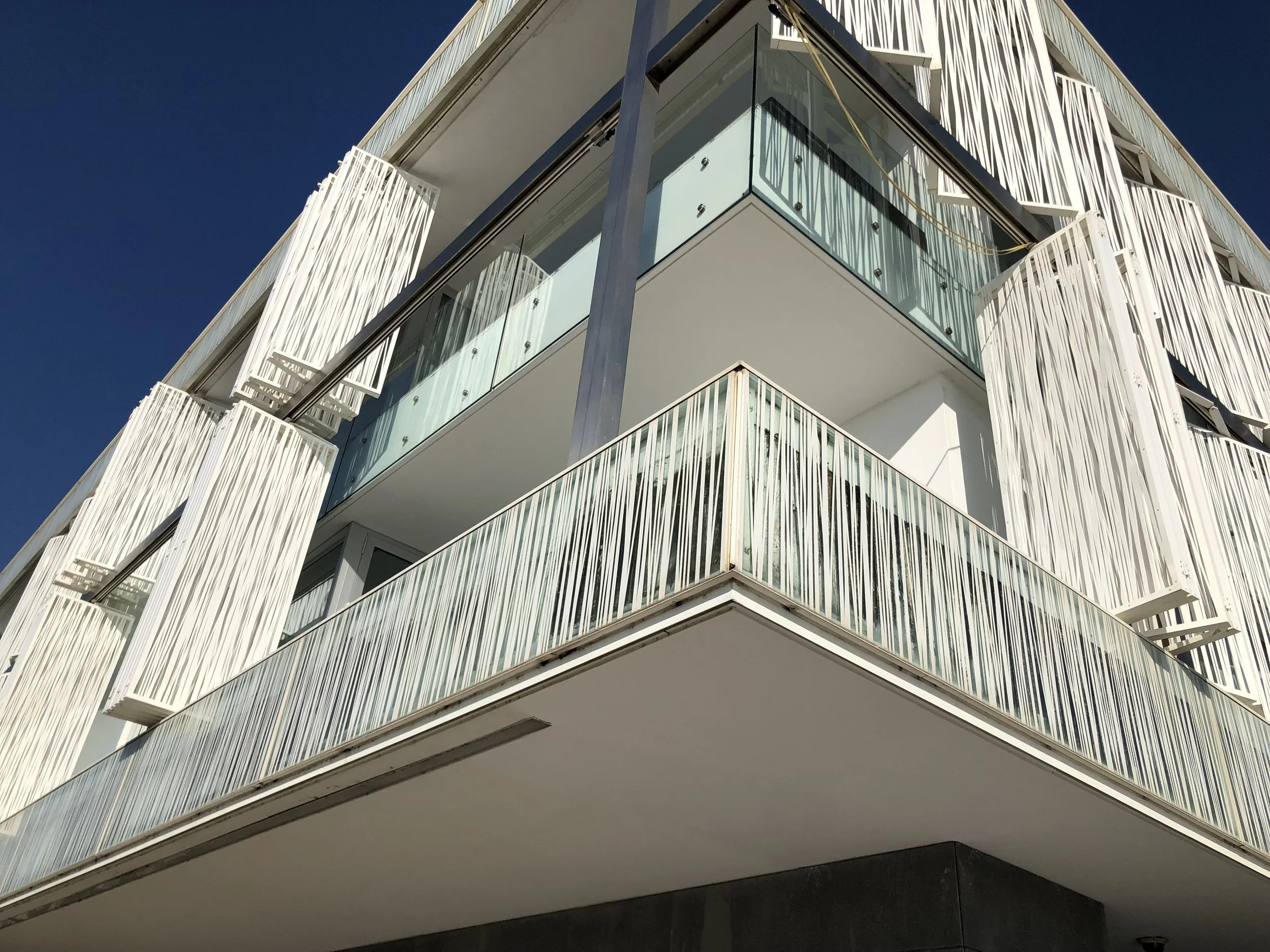
![Torre de Belém (Francisco de Arruda) [image: Gavin Guthrie]](https://images.squarespace-cdn.com/content/v1/55a9c36fe4b03f43f2a11902/1565362187522-0J5L8OI59KMEBV188YT9/IMG_5390.JPG)
![The Monumento Combatentes Ultramar (Carlos Guerrero and Batista Barros) [image: Gavin Guthrie]](https://images.squarespace-cdn.com/content/v1/55a9c36fe4b03f43f2a11902/1565362126341-PJHWR4T26BI2EX5KKMSD/IMG_5393.JPG)
![Museu Coleção Berardo (Vittorio Gregotti and Manuel Salgado) [image: Gavin Guthrie]](https://images.squarespace-cdn.com/content/v1/55a9c36fe4b03f43f2a11902/1565362259199-N1OPJNJBQ24QC3GW434Q/IMG_5405.JPG)
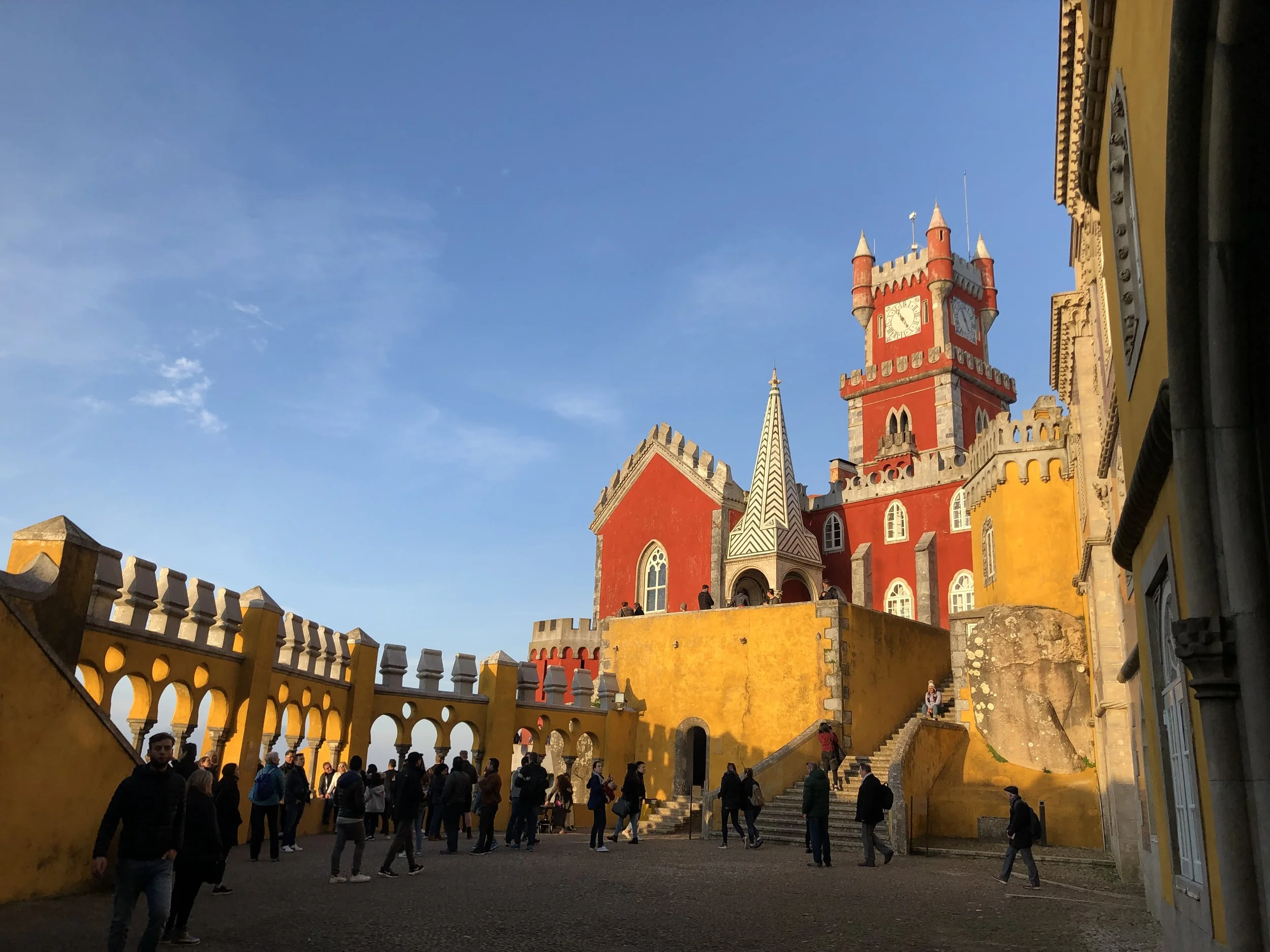
![Arco da Rua Augusta (Veríssimo da Costa) [image: Gavin Guthrie]](https://images.squarespace-cdn.com/content/v1/55a9c36fe4b03f43f2a11902/1565362960181-1MNPPCGUE69D14R3I347/IMG_5721.JPG)
![St Joseph Cathedral (Hans Schurr) [image: Gavin Guthrie]](https://images.squarespace-cdn.com/content/v1/55a9c36fe4b03f43f2a11902/1665975854824-FZQGBSZ0M2G67DQFEFQK/40.jpg)
![Hotel Slipway (FBW Architects) [image: Gavin Guthrie]](https://images.squarespace-cdn.com/content/v1/55a9c36fe4b03f43f2a11902/1665975904580-FW7YLH1JBTPJYSFB01NG/50.jpg)
![Christ Church Cathedral (C Forster Hayward) [image: Gavin Guthrie]](https://images.squarespace-cdn.com/content/v1/55a9c36fe4b03f43f2a11902/1665975985374-IDP2J7P6GKR29MPE14YZ/Photo+2022-02-26%2C+9+52+13+AM.jpg)
![Stone Town home [image: Gavin Guthrie]](https://images.squarespace-cdn.com/content/v1/55a9c36fe4b03f43f2a11902/1665978909306-LLHCV4IEXPS20RG1NNCW/Photo+2022-02-25%2C+10+17+19+AM.jpg)


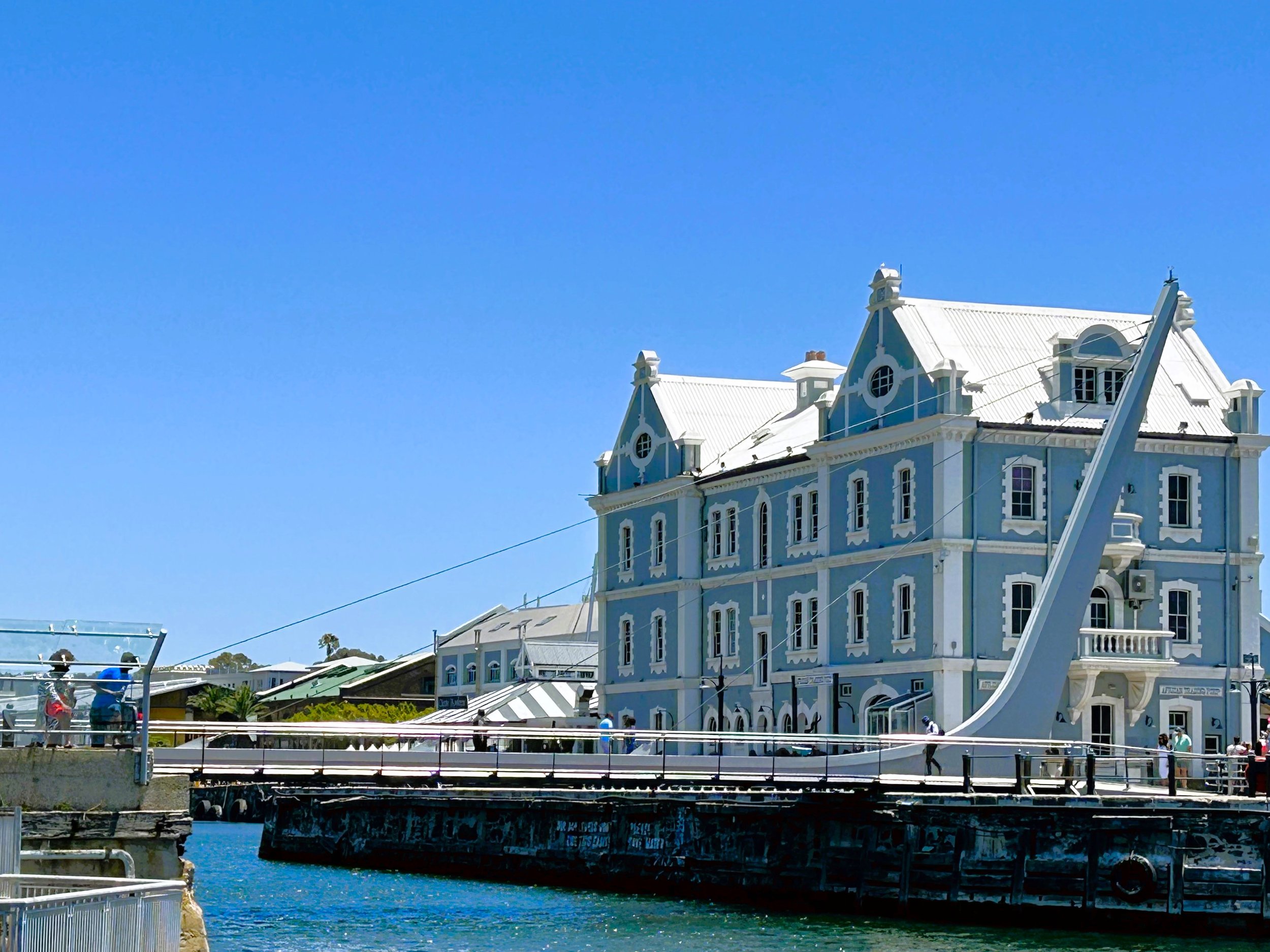
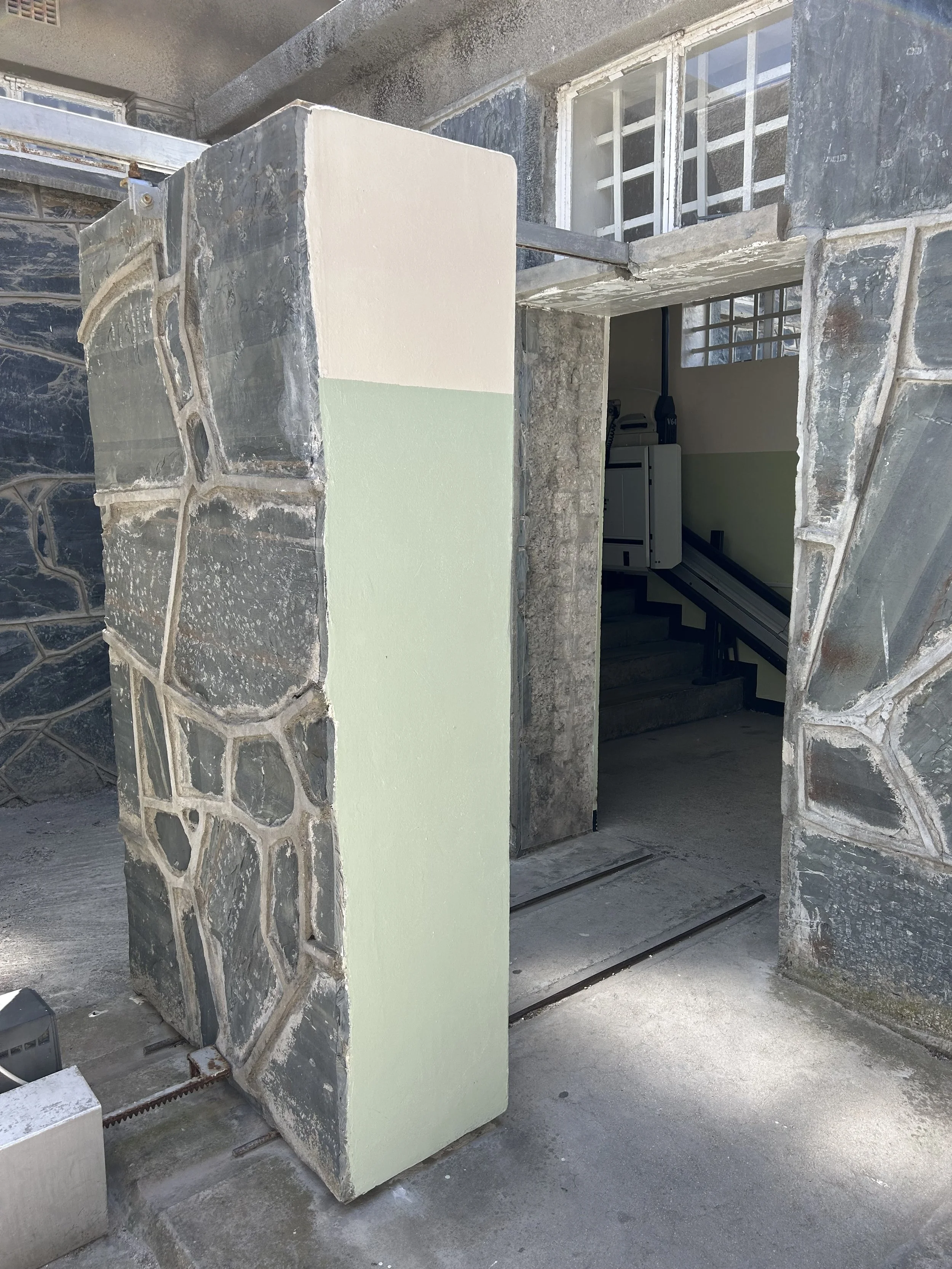
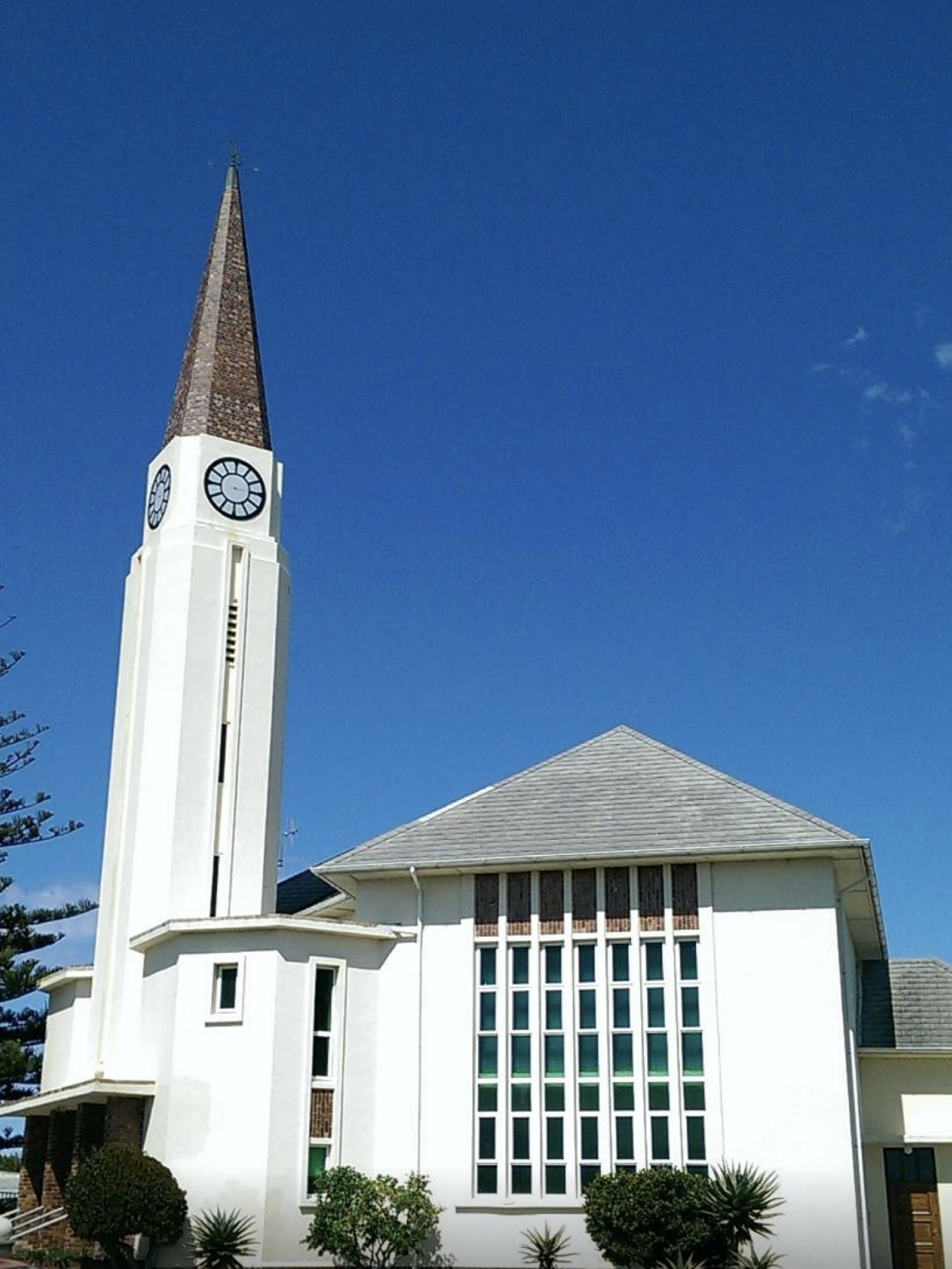
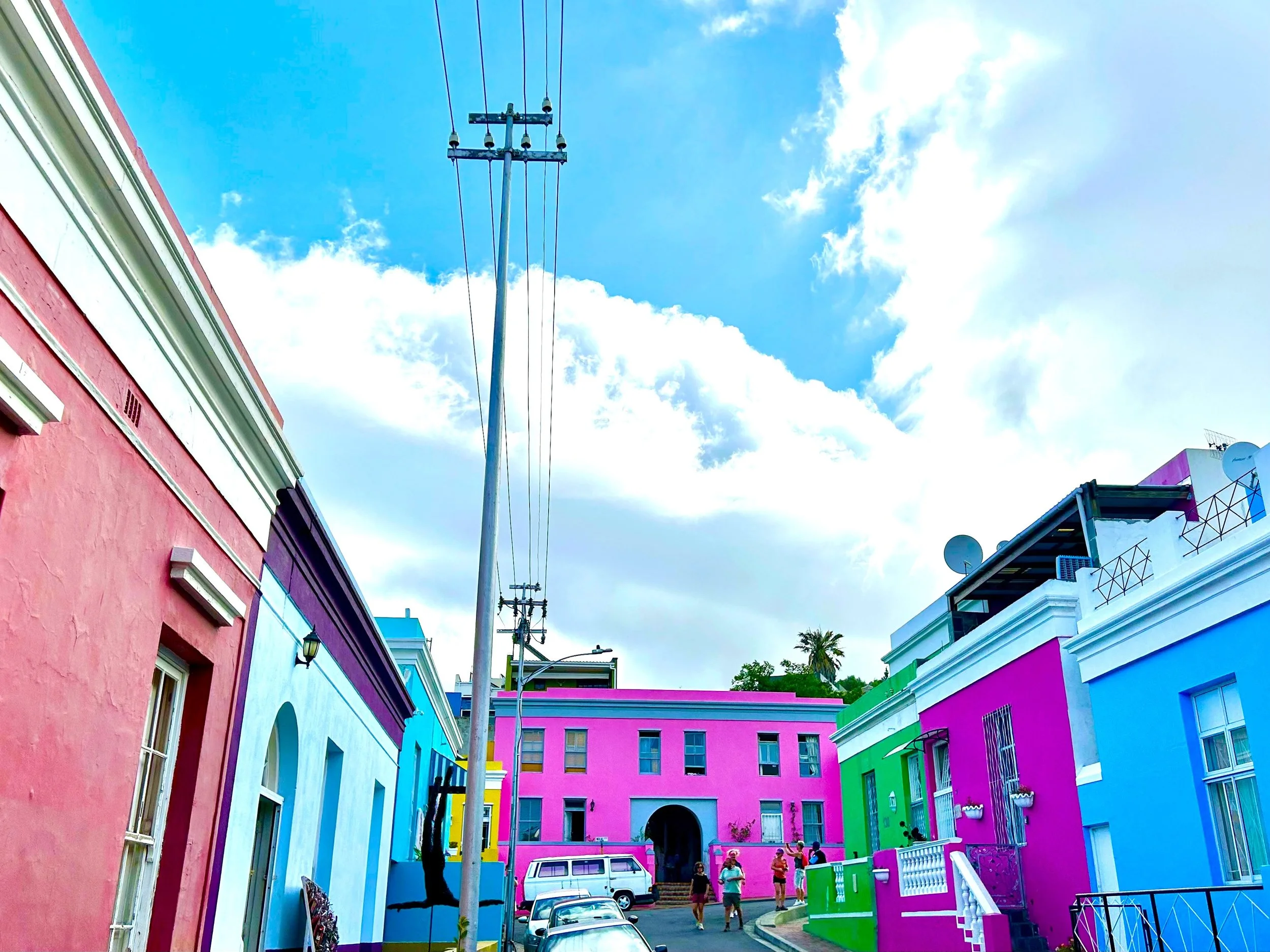
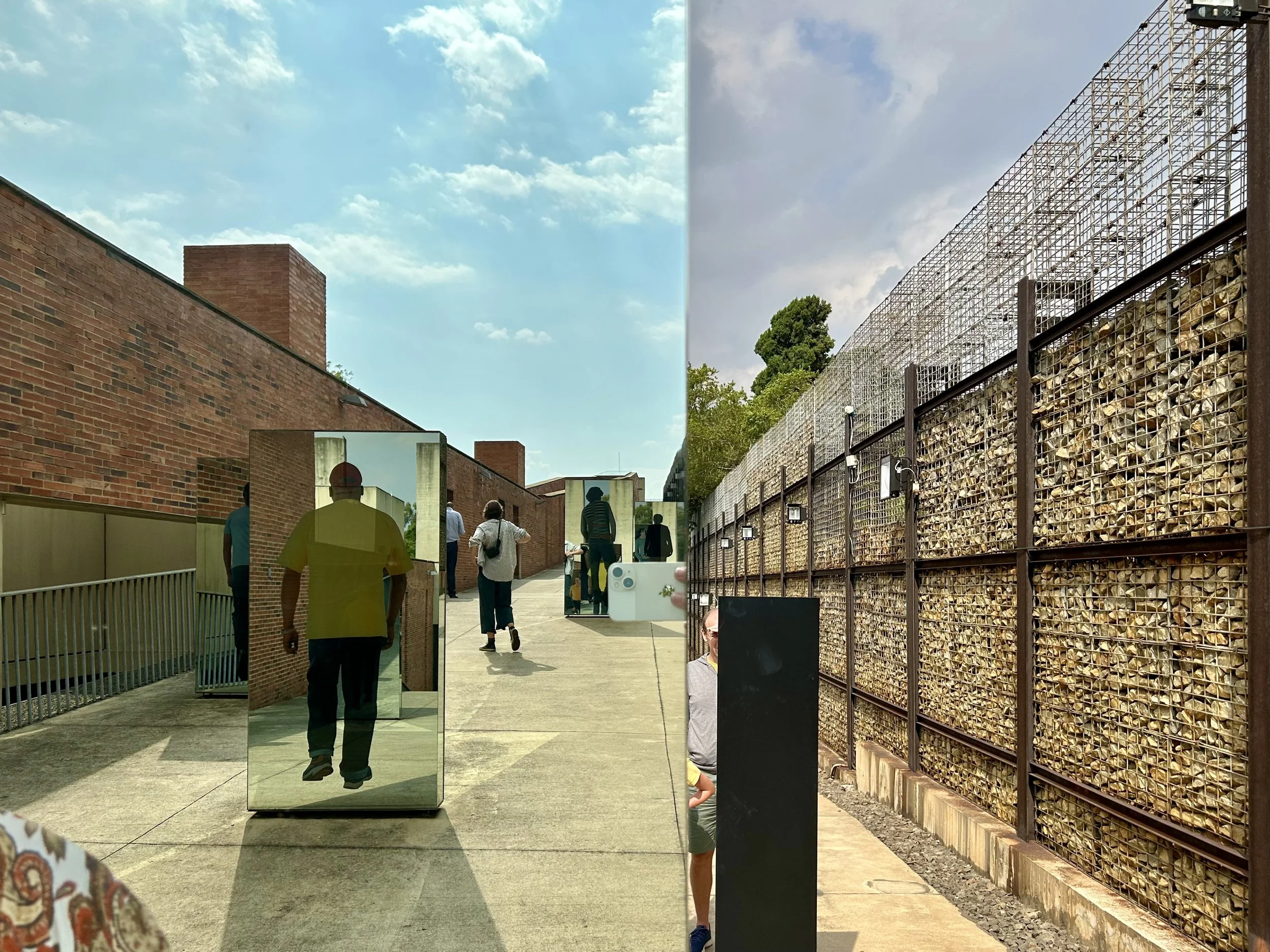









![Centennial Bridge (Miguel Rosales) [image: Gavin Guthrie]](https://images.squarespace-cdn.com/content/v1/55a9c36fe4b03f43f2a11902/1709275333469-T5NSBC0UOV99R2WZEVTF/195.jpg)
![Panama City skyline [image: Gavin Guthrie]](https://images.squarespace-cdn.com/content/v1/55a9c36fe4b03f43f2a11902/1709275379137-8ZOEDH73XQ91YHSKDT9B/217.jpg)
![altar of Church of Saint Joseph [image: Gavin Guthrie]](https://images.squarespace-cdn.com/content/v1/55a9c36fe4b03f43f2a11902/1709275401147-PMRNWGS4SVAKTE3N6QTV/235.jpg)
![Church of the Society of Jesus [image: Gavin Guthrie]](https://images.squarespace-cdn.com/content/v1/55a9c36fe4b03f43f2a11902/1709275461032-NCV835CWNI6MD0PDSP8T/239.jpg)
![Al Jumail mosque [image: Gavin Guthrie]](https://images.squarespace-cdn.com/content/v1/55a9c36fe4b03f43f2a11902/1737433655289-11I04PHHE73J7ZBTWNUR/0022.JPG)
![Al Zubara fort [image: Gavin Guthrie]](https://images.squarespace-cdn.com/content/v1/55a9c36fe4b03f43f2a11902/1737433696562-JL9O44S1WM4ATO7VTHCJ/0028.JPG)
![Al-Hitmi Complex (NORR) [image: Gavin Guthrie]](https://images.squarespace-cdn.com/content/v1/55a9c36fe4b03f43f2a11902/1737433734721-3WGJPCI6I9Q2GWB48GQ0/0082.JPG)
![Museum of Islamic Art (IM Pei) [image: Gavin Guthrie]](https://images.squarespace-cdn.com/content/v1/55a9c36fe4b03f43f2a11902/1737433761846-ETLUCPEV49KSGWFD0WFA/0090.JPG)
![Sheikh Zayed Grand Mosque (Yusef Abdelki) [image: Gavin Guthrie]](https://images.squarespace-cdn.com/content/v1/55a9c36fe4b03f43f2a11902/1737511333534-UTA66YW4OF6USIPS26FF/0268.JPG)
![Capital Gate (RMJM Architects) [image: Gavin Guthrie]](https://images.squarespace-cdn.com/content/v1/55a9c36fe4b03f43f2a11902/1737511193939-8HN3ZHOUWXCXDB8L7Y8Y/0300.jpg)
![Qasr Al Watan (Xavier Cartron Paris) [image: Gavin Guthrie]](https://images.squarespace-cdn.com/content/v1/55a9c36fe4b03f43f2a11902/1737511271517-3ZYJ9Q2UMFOUHE0BIY05/0318.JPG)

![Dubai Frame (Arcadis) [image: Gavin Guthrie]](https://images.squarespace-cdn.com/content/v1/55a9c36fe4b03f43f2a11902/1737511541748-VRZMSQHE4ECV30TKGDNB/0399.JPG)
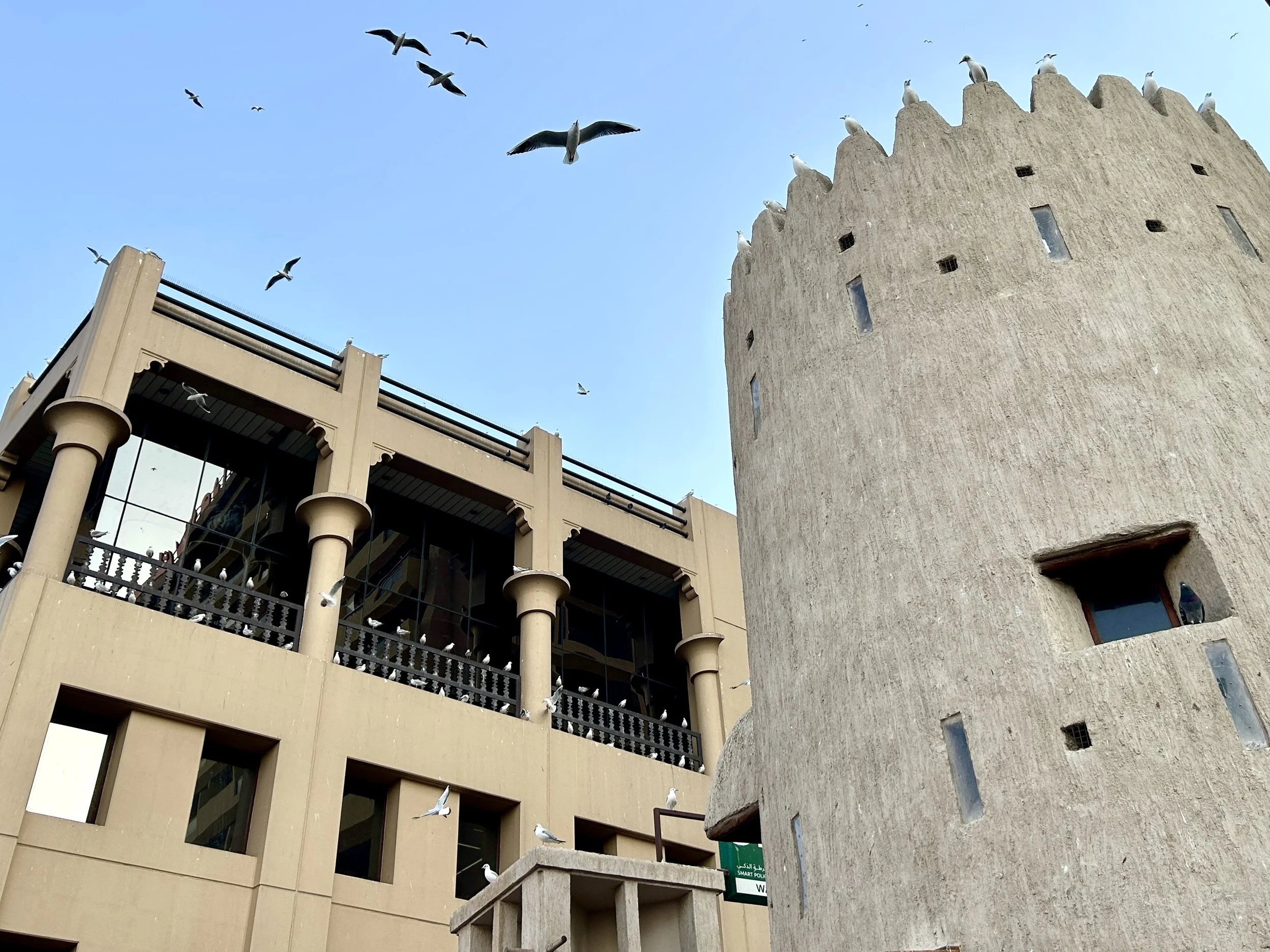
![Burj Khalifa (SOM) [image: Gavin Guthrie]](https://images.squarespace-cdn.com/content/v1/55a9c36fe4b03f43f2a11902/1737511585377-MDW1PW53NAP5TJKS3CBM/0458.JPG)
![Queen Elizabeth 2 (Daniel Wallace) [image: Gavin Guthrie]](https://images.squarespace-cdn.com/content/v1/55a9c36fe4b03f43f2a11902/1737511633984-4D1D3832ESSK5X2PY0HS/0529.JPG)

![[image: Gavin Guthrie]](https://images.squarespace-cdn.com/content/v1/55a9c36fe4b03f43f2a11902/1754503795441-2B6U5H1H0ITZLMONHEFD/IMG_E2903.JPG)
![[image: Gavin Guthrie]](https://images.squarespace-cdn.com/content/v1/55a9c36fe4b03f43f2a11902/1754504269742-83YZ5Z8BHKP8PU885CC4/IMG_E3008.JPG)
![[image: Gavin Guthrie]](https://images.squarespace-cdn.com/content/v1/55a9c36fe4b03f43f2a11902/1754504317235-NRX2PLJ89E7YLIS014VV/IMG_E3053.JPG)
![[image: Gavin Guthrie]](https://images.squarespace-cdn.com/content/v1/55a9c36fe4b03f43f2a11902/1754504334344-E6KNU854N9VQZ4NZAFMS/IMG_E3060.JPG)
![[image: Gavin Guthrie]](https://images.squarespace-cdn.com/content/v1/55a9c36fe4b03f43f2a11902/1754504378751-WLMSPKVWMU175VY2N4WB/IMG_E3186.JPG)
![[image: Gavin Guthrie]](https://images.squarespace-cdn.com/content/v1/55a9c36fe4b03f43f2a11902/1754504409919-8DC7FW627K3ANCR19PTP/IMG_E3236.JPG)
![[image: Gavin Guthrie]](https://images.squarespace-cdn.com/content/v1/55a9c36fe4b03f43f2a11902/1754504429151-Z7ZY6MVFV3HUS1SBSHE4/IMG_E3231.JPG)
![[image: Gavin Guthrie]](https://images.squarespace-cdn.com/content/v1/55a9c36fe4b03f43f2a11902/1754504455128-OGSBGR0JGCFBQLJV5J85/IMG_E3341.JPG)